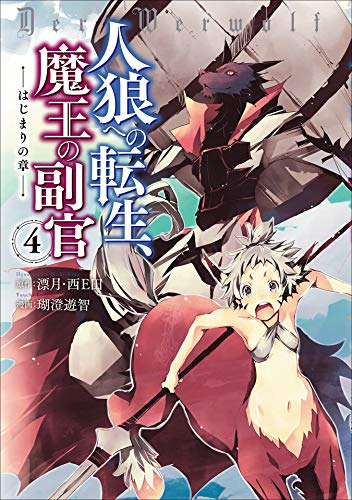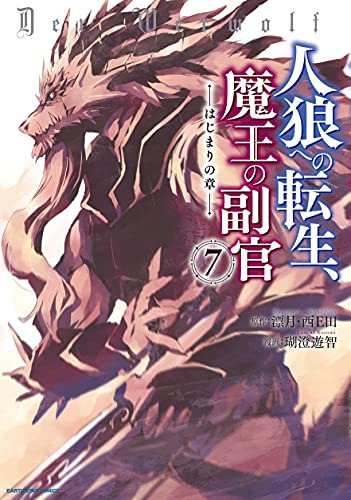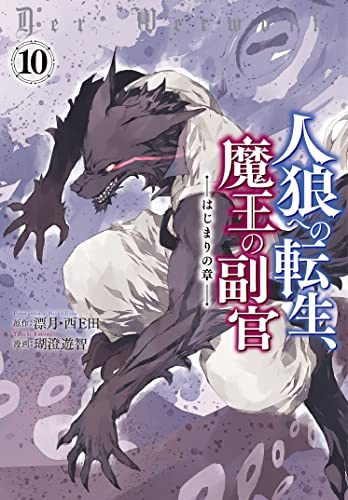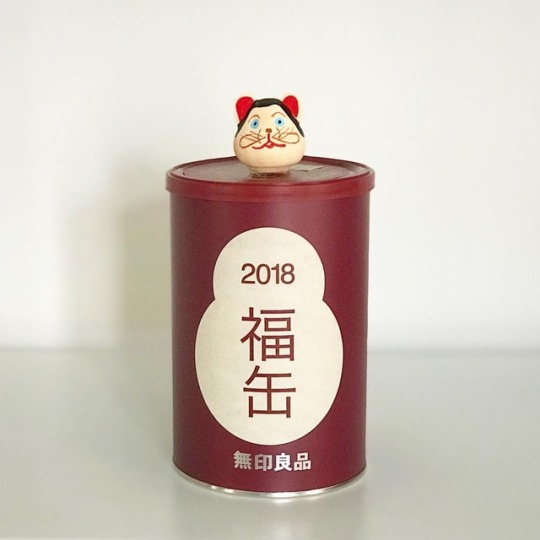#fukukan
Text










Jinrou e no Tensei, Maou no Fukukan[人狼への転生、魔王の副官]: Reincarnated to Wolfman, Adjutant of the Demon Lord
aka Der Werewolf
1 note
·
View note
Photo

2019 Day 365 Part 1 of 365: 2020 Lucky Can 🥫 I got my 福缶 (ふくかん, fuku kan, "Lucky Can") from @mujicanada for the second year now 😊 it is a can that has a random handcrafted lucky charm from different regions in Japan 🗾 For 2020, I got the 張子犬 (hariko inu, papier-mache dog) which is famous in 埼玉県 越谷市 (Saitama Prefecture, Koshigaya City) 😊 A few more hours until the old decade ends, and the new decade starts 🎉🎆🧓🏻👶🏻 #2019Goals #365Days2019 #2020Goals #福缶 #Fukukan #LuckyCan #Muji #MujiCanada https://www.instagram.com/p/B6vuhhlA8aT3UUfdqp_q4dvira-EP4QP_maAQA0/?igshid=l3nlbf8dcfum
0 notes
Photo



[Dengeki Sentai Changeman]
Fukukan Buuba
10 notes
·
View notes
Photo

2018 will be the year of the dog in the japanese (and chinese) calendar, thank you to @fusakina and @muji_italia for the fukukan (the trational japanese lucky charm for the new year) 🐕 #fukukan #mujirushiryohin #ふくかん
0 notes
Video
youtube
Review of the light novel Der Werewolf The Annals of Veight Volume 1 by Hyougetsu
Review is of the official English release of the light novels by J-Novel Club.
📔LIGHT NOVEL INFORMATION
TITLE: Der Werewolf The Annals of Veight
AKA: 人狼への転生、魔王の副官, Jinrou e no Tensei, Maou no Fukukan, Märchen der Werwolf: The Annals of Veight, Reincarnated into Werewolf as The demon king's aide
AUTHOR: Hyougetsu
ILLUSTRATOR: Nishi(E)da
PUBLISHER (English): J-Novel Club
TRANSLATOR: Ningen
RELEASE DATE (English): September 13, 2018
PURCHASE (Amazon.com): https://amzn.to/2UThSNP
PUBLISHER (Japan): Earth Star Novel
RELEASE DATE (Japan): November 14, 2015
VOLUMES RELEASED (Japan to Date): 11 (Ongoing. Most recent released January 19, 2019)
ANIME SERIES: None
#der werewolf#the annals of veight#Jinrou e no tensei#hyougetsu#j-novel club#lightnovel#light novel#book review
2 notes
·
View notes
Text
LISTA DE ATUALIZAÇÕES:
Tensei Kyuuketsuki-san Wa Orihune Ga Shitai - Cap. 10
MangaHost https://goo.gl/86dwBU
Union Mangás https://goo.gl/7Azbou
Takarakuji de 40-Oku Atattanda Kedo Iseka Ni Ijuusuru - Cap. 06
Manga Host https://goo.gl/APnMa2
Union Mangás https://goo.gl/KSdbPj
Dokunie Cooking - Cap. 04
MangaHos https://goo.gl/UPTuLP
Union Mangás https://goo.gl/JfxEvi
Kichikujima - Cap. 10
Manga Host https://goo.gl/VemDJX
Union Mangás https://goo.gl/CeZnCq
Jinrou e no Tensei, Maou no Fukukan (Novel) - Cap. 011 e 012
Manga Host
011 - https://goo.gl/Q9d35T
012 - https://goo.gl/1hbaUt
Union Mangás:
011 - https://goo.gl/nJzXrt
012 - https://goo.gl/pQZGij
Cambria - Cap. 04
MangaHost https://goo.gl/cZYGva
Union Mangás https://goo.gl/KCNLEZ
Densetsu no Yuusha no Konkatsu - Cap. 04
Manga Host https://goo.gl/vzX94f
Union Mangás https://goo.gl/cQH2mN
2 notes
·
View notes
Text
Jinrou e no Tensei, Maou no Fukukan
Read manga - Manga – kisekimanga.com URL manga: https://ift.tt/3ktbfhI

Jinrou e no Tensei, Maou no Fukukan summary: Reincarnated to a werewolf magician, the Protagonist Vyett was instated as the vice head of the Demon Lord’s third brigade force. Occupying a remote market town, he was entrusted to management and defense. As a former human, born a monster, I can understand the sentiments of both sides well enough. Because of that, those around seem to think I’m a man of wisdom, or something of the like, but it’s really just one trouble after the next. I have to follow those monsters that are overly quick to resort to violence, and do something about the humans, who start to complain immediately. So today as well, I’ll do my best at managing the Demon Lord’s main force.
from manga: https://kisekimanga.com
0 notes
Text
@shyquietwanderer1
ooh?? looks cool! what's the manga called?
https://kissmanga.com/Manga/Jinrou-e-no-Tensei-Maou-no-Fukukan
hopefully this link works gfdhgh in english the name is like Reincarnated into Werewolf as The Demon King's Aide
0 notes
Photo

[[[ lnwmanga อัพเดท 12/10/2019 ]]]
อ่านการ์ตูน Jinrou e no Tensei, Maou no Fukukan ตอนที่ 0
http://www.lnwmanga.com/manga/jinrou-e-no-tensei-maou-no-fukukan
0 notes
Text
Fullmetal Alchemist: Brotherhood Episode 21, Runthrough (Part 1)
At long last, we get to do another anime episode runthrough!
A few words before we begin:
— We are posting updates of the runthrough on Saturdays at 12pm (AST).
— Each update will cover an entire scene, except if a scene is under a minute, in which case it is added to the subsequent or previous scene.
— Each part will cover a maximum of 10 sentences. So various parts will be released on one day. (And that is the case today.)
Scene 1, Hospital. Roy, Havoc, Riza
ロイ:バカ者。
ロイ:敵の言葉を信じて戦���喪失だと。
りざ:申し訳ありません。
ロイ:うろたえるな。
ロイ:生きることを諦めるな。
ロイ:私の副官ならもっと毅然としていろ。
リザ:はい。
ロイ:引き続き私の背中を任せる。
ロイ:精進しろ。
ハポック:大佐も人のこと言えないでしょうが、 司令官がのこのこ出てきちまって。
_______________________________________________________________________
ロイ:バカ者!
(Roi: Baka-mon.)
バカ者 (Baka-mon)- is a noun meaning “idiot.” In this scene, Roy is speaking to two people, so we’ll pluralize it. “Baka” itself is the noun meaning idiot. “-mon” (which is a truncation of -mono) is a suffix meaning “person.” So you can translate this as “stupid people” if you so wish.
Translation: “Idiots!”
_____________________________________
ロイ:敵の言葉を信じて戦意喪失だと。
(Roi: Teki no kotoba wo shinjite senisoushitsu da to.)
敵 (teki)- is a noun meaning “enemy.”
の (no)- is the genitive particle. The genitive is the grammatical case indicating possession, membership, or general subset membership. In Japanese: “X no Y” tends to translate in English as “Y of X.”
言葉 (kotoba)- is a noun meaning “word,” or “words.” In this case, it refers to what the enemies had told them.
を (wo)- is the accusative particle. The accusative is the grammatical case indicating the direct object.
信じて (shinjite)- is the gerund of the verb “shinjiru,” meaning “to believe.” The gerund in Japanese (which does not perfectly fit the description of a “gerund,” but we’re going with the label) does a number of things. In this case, it is conjunctival, meaning that we’re talking about “Phrase 1 ‘and’…”
戦意喪失 (senisoushitsu)- is a noun meaning “the phenomenon of losing one’s fighting spirit.” When you have nouns that have verb-y meanings, it’s okay to translate it verbally. (We’re not terribly concerned with translations. We care more about knowing what words mean and what they’re doing.)
だ (da)- is the indicative, affirmative, present conjugation of the copula. We refer to verbs in a general sense by their indicative, affirmative, present conjugation. Anyway, a copula is a verb that indicates identity. In Japanese, they also indicate ownership at times. So this translates to “to be” or “to have.”
と (to)- is a quotative particle. A quotative in a functional unit that lets you know that the preceding phase (in some languages it’s the subsequent phrase, but that’s not important) is a quote or subordinate clause. In Japanese, this is succeeded by a verb- but we don’t have a verb here. “da to” is a bit of an expression. One can take it to be semantically an emphasizer, but what’s going on syntactically is that there’s a verb not being mentioned. In this case, it’s probably “iu,” meaning “to say.” This is a bit like repeating something someone just said. Make sense?
Translation: “[You] believed the words of the enemy and you lost your fighting spirit!”
_____________________________________
りざ:申し訳ありません。
(Riza: Moushiwake arimsen.)
申し訳 (moushiwake)- is a noun meaning “excuse.” If we break it down, we see the participle “moushi,” from “mousu,” meaning “speaking,” and “wake,” meaning “reason.” “So this is like a “reason for speaking.”
ありません (arimasen)- is the polite, indicative, negative, present conjugation of the copula “aru.” Japanese has a few copulae, mainly 3, and this is the second. In this case, we are talking about possession. Also, this is a common expression used to say one’s sorry.
Translation: “We do not have an excuse.”
_____________________________________
ロイ:うろたえるな。
(Roi: urotaeru-na)
うろたえるな (urotaeru-na)- is the imperative, negative conjugation of the verb “urotaeru,” meaning “to become upset” or “to lose one’s head.”
Translation: “Don’t lose your head.”
_____________________________________
ロイ:生きることを諦めるな。
(Roi: Ikiru koto wo akirameru-na)
生きる (ikiru)- is the indicative, affirmative, present conjugation of the verb meaning “to live.”
こと (koto)- is a noun meaning “thing.” “Koto” is a functional noun that makes a verb phrase syntactically a noun. In English, this gets translated generally as a gerund. So, in this case, the translation is “living.”
を (wo)- is the accusative particle.
諦めるな (akirameru-na)- is the indicative, negative conjugation of the verb “akirameru,” meaning “to give up on” something.
Translation: “Don’t give up on living.”
_____________________________________
ロイ:私の副官ならもっと毅然としていろ。
(Roi: Watashi no fukukan nara motto kizen-to shite iro.)
私 (watashi)- is the first-person, singular pronoun, i.e. “I.”
の (no)- is the gerund particle. In this case, since the particle is working with “watashi,” we get to use the genitive inflection (or inflexion, both are okay) of the first-person singular pronoun, i.e. “my.”
副官 (fukukan)- is a noun meaning “aide” or “adjutant,” which is the person who helps a senior officer in the military. That’s that Riza is.
なら (nara)- is a conditional conjunction, translating to “if.” Copulae in Japanese are often dropped out; and this is a case where it is.
もっと (motto)- is an adverb meaning “more.”
毅然と (kizen-to)- is an adverb meaning “with resolution.” It comes from the noun “kizen,” meaning “resolution” and “to” which is an adverbial suffix, which isn’t he normal adverbial suffix and is an historical thing.
して (shite)- is the gerund of the verb “suru,” meaning “to do” or “to act as” “Kizen to shite/shita” is an expression meaning “acting with resolution.”
いろ (iro)- is an imperative, affirmative conjugation of the 3rd copula, iru. The gerund plus iru very often is used for a periphrastic progressive aspect conjugation. The progressive aspect is the difference between “he eats” (simple aspect) and “he is eating” (progressive aspect). It seems like this is one of those cases (and perhaps a small play with words).
Translation: “If you are my adjutant, act with more resolution.”
_____________________________________
リザ:はい。
(Riza: Hai.)
はい (hai)- is an interjection conveying affirmation and understanding. This normally gets translated to “yes.”
Translation: “Yes.”
_____________________________________
ロイ:引き続き私の背中を任せる。
(Roi: Hiki-tsudzuki watashi no senaka wo makaseru.)
引き続き (hiki-tsudzuki)- is an adverb meaning “for a long time.” It’s actually the participle of the verb “hiki-tsudzuku,” which, in turn, comes from “hiki,” meaning “pulling” and “tsudzuku,” meaning “to continue.”
私 (watashi)- is the same as before.
の (no)- is the same as before.
背中 (senaka)- is a noun meaning “back.”
を (wo)- is an accusative particle.
任せる (makaseru)- is the indicative, affirmative, present conjugation of “to entrust.” The present tense in Japanese is actually the imperfective tense, meaning the action either be in the present or the future. In this case, it’s actually future.
At this point, we should point out that Roy does not indicate the indirect object, so the translation will sound weird if you leave it out, but if you must put the indirect object in the translation, it’s Riza.
Translation: “I will entrust my back [to you] for a long time.”
_____________________________________
ロイ:精進しろ。
(Roi: Shouji shiro.)
精進 (shouji)- is a noun meaning “commitment” or “diligence.”
しろ (shiro)- is an imperative, affirmative conjugation of the verb “suru,” which we saw a moment ago. “Suru” often goes with nouns to make them verbal. Sometimes the nouns have verbal counterparts in English, in which case you can use that in your translation, and if not “to be NOUN” can be will work just fine.
Translation: “Be diligent.”
_____________________________________
ハポック:大佐も人のこと言えないでしょうが、司令官がのこのこ出てきちまって。
(Habokku: Taisa mo hito no koto ienai deshou ga, shireikan ga noko-noko dete ki-chimatte.)
大佐 (taisa)- is a noun meaning “colonel.” That is Roy’s rank.
も (mo)- is a secondary particle meaning “too.” “Mo” sometimes causes the primary particle (the case particles) to drop out. In this case, the primary particle, dropping out is “wa,” which is the topical particle, which indicates the topic of the sentence and syntactically is not the subject.
人 (hito)- is a noun meaning “person.”
の (no)- is the attributive form of the copula “da.” Verb Phrases modify nouns by immediately preceding them. This position is the called the attributive position. When you have a verb phrase that uses the verb “da,” “da” becomes “no.”
こと (koto)- is the same noun as before. “No koto” is an expression used with noun referring to people for emphasis. Also, there is an omitted nominative particle “ga” here.
言えない (ienai)- is the potential, negative, present conjugation of the verb “iu,” meaning “to say” or “to talk.” The potential mood is one that describes the ability to do something. So this means “can talk,” and since it’s negative, “cannot talk.”
でしょう (deshou)- is a verbal expression meaning “can you?” or “isn’t it?” or “I guess.” Whatever the translation you may use as a reference is, it is dubitative, meaning it expresses some doubt.
が (ga)- is a conjunction, often translating to “though” or “and.” At other times it is like an ending particle, letting people know that there is more to come soon. (Someone tell me to talk about what “ga” means and translations later on please.)
司令官 (shireikan)- is a noun meaning “commanding officer.”
が (ga)- is the nominative particle. The nominative case indicates the subject of a sentence.
のこのこ (nokonoko)- is an adverb meaning “nonchalantly.”
出て (dete)- is the gerund of the verb “deru,” meaning “to leave.” This is another conjunctive use.
きちまって (ki-chimatte): is the gerund of the verb “chimau” with the truncation of “kita,” the indicative, past, affirmative conjugation of the verb “kuru,” meaning “to come.” “Chimau” is a verb meaning “to do completely.” When it is used with the stem of a verb, means to do the verb completely, or to do the verb and imply that that action is in some what inconvenient or annoying. The reason it’s in the gerund is because it’s leaving the topic open so that he, or someone else, can add more to it, which is a conjunctival use.
Translation: “The colonel, [that] person himself cannot talk, and the commander officer [Roy, the colonel] comes and goes nonchalantly.”
That’s it for now. The story continues in Part 2.
Facebook Twitter Instagram—Survey —Patreon
#anime lessons#Fullmetal Alchemist: Brotherhood#japanese#日本語#言語学#linguistics#anime#runthroughs#langblr#studyblr
6 notes
·
View notes
Photo

Day 364 of 365 of 2018: 2019 Lucky Can 🛢️ I got the 2019 福缶 (ふくかん, fuku kan, "Lucky Can") from @mujicanada 😊 inside is a random handcrafted lucky charm from different regions of Japan 🗾 these charms has different styles anf hidden messages, ehich would bring blessings for the New Year 😊 What I got is the Takasaki Daruma Doll (高崎だるま), which is from Takasaki City in the Gunma Prefecture 😊 the eyebrows represent the cranes and the cheek hairs represent the tortoise 😊 also, it bounces back upright no matter how many times it gets knocked down... This is why it has been a cherished good luck charm and a symbol of tenacity 😊 To be able to make it a charm, the left eye will be coloured while silently making a wish or goal. Once the goal or wish comes true, the right eye will be painted 😁 I am hoping that 2019 will bring us great fortune, and give us lots of good hopes and wishes in the future 💖 #2018Goals #365Days2018 #2019Goals #Muji #Fukukan #FortuneCan #TakasakiDarumaDoll #Daruma https://www.instagram.com/p/BsBu5G2A8D9JSJY-GGfc-kE19jH3A1lzJPqM2A0/?utm_source=ig_tumblr_share&igshid=1ifyyn26e7yi2
0 notes
Text
Jinrou E No Tensei, Maou No Fukukan.
Alternative: 人狼への転生、魔王の副官 ; 以人狼之姿转生 ; Der Werwolf ; Reincarnated into Werewolf as The Demon King's Aide ; Transmigration to a Werewolf, the Demon Lord’s Camp
Description : Reincarnated to a werewolf magician, the Protagonist Vyett was instated as the vice head of the Demon Lord’s third brigade force. Occupying a remote market town, he was entrusted to management and defense. As a former human, born a monster, I can understand the sentiments of both sides well enough. Because of that, those around seem to think I’m a man of wisdom, or something of the like, but it’s really just one trouble after the next. I have to follow those monsters that are overly quick to resort to violence, and do something about the humans, who start to complain immediately. So today as well, I’ll do my best at managing the Demon Lord’s main force.
#MangaReddit.com, #ReadFreeMangaOnline
Read Free Manga Online at MangaReddit.com: https://mangareddit.com/p/jinrou-e-no-tensei-maou-no-fukukan_1584430145.html
Read more.
0 notes
Text
Canadians and retailers toy with risk and reward through mystery box trend
TORONTO — When Toronto YouTubers Becky Wright and Kelsey MacDermaid picked up the mail last October, the sight of a bright blue box had them bubbling with excitement.
The duo, who call themselves the Sorry Girls and make do-it-yourself videos on YouTube, had shelled out $67 for the box on eBay, but had no idea who it was from or what was in it.
The package was one of the thousands of “mystery boxes” advertised and sold online by average joes hoping to make a quick buck, hobbyists who take delight in orchestrating a game of risk and reward and businesses looking to get in on the craze.
Boxes typically go for as little as $20, but some have fetched as much as $50,000. What’s inside remains a secret until it’s opened by the purchaser, but social media shows some people discovering Apple MacBook computers, Louis Vuitton wallets and Rolex watches, while others have found holiday ornaments, DVDs, action figures or even broken electronics.
Wright and MacDermaid’s box was full of crocheted items — a pumpkin, fingerless gloves, a headband, a hat and a dream catcher.
“We got lucky, unlike most people who order these things,” Wright said.
They said they have since noticed YouTubers buying the boxes — primarily because they are a fast and easy way to rack up views for a channel.
“I was seeing some getting so ridiculous. (They would say) ‘I bought a $5,000 mystery storage locker of stuff,”‘ said Wright. “That’s crazy.”
Kent Sikstrom, Kijiji Canada’s community relations manager, said in an email that the company doesn’t have any official policies limiting the sale of mystery boxes, but chalked it up to being a “fad/trend of the month” and said it is “likely being exaggerated for entertainment purposes.”
Meanwhile, eBay’s policy does not allow “mystery items where contents aren’t identified,” but The Canadian Press found plenty of boxes with no descriptions of what’s inside listed on the site.
Camille Kowalewski, eBay Canada and Latin America’s head of communications, clarified the boxes are allowed if you indicate the type of item enclosed.
Kowalewski said boxes with collectible or sports themes get the most traction, but said she has noticed retail brands and specialty goods companies wading into the trend.
Muji sold Fukukan or “lucky cans” that contain handmade traditional lucky charms from different regions in Japan in November, while Nordstrom has rolled out $25 “surprise bags” it stuffs with seven or eight small items from accessory and memento maker Three Potato Four.
Brian Ehrenworth, the president of sports collectibles company Frameworth, said his company also jumped on the trend, which he first learned about three years ago when he saw someone selling mystery boxes at a trade show.
A few buyers were excited with what they got in their boxes, but others were disappointed. Ehrenworth, whose company has long-standing relationships with athletes, figured he could use his connections to put a twist on the model that would see every buyer walk away with something of considerable value, limiting the gamble to which team the merchandise they got was related to.
Within six months, Frameworth was selling its first set of mystery boxes. That set and every other one following it has sold out.
The latest version is being sold for $250 plus shipping on eBay, though they are advertised as having an average value of $725. Each includes an authentic, autographed, fully-stitched and officially licensed NHL jersey, though buyers won’t know which they’ll receive. Fifty of the 200 available boxes will have a jersey from an NHL All-Star or Legend such as Sidney Crosby, John Tavares, Auston Matthews, Wayne Gretzky or Bobby Orr, but one contains a “golden ticket” redeemable for a Sidney Crosby game-used stick valued at $5,000.
“They might not get (the Crosby product), but they should be happy with the product they receive because if they don’t like it, they can put it back up on eBay,” Ehrenworth said.
Reselling anything in his boxes, he said, should be easy because interest in the NHL is broad, but he warns that reselling mystery box items you are unhappy with might be difficult if you buy from sellers that are just as secretive as their boxes.
“There are a plethora of companies that will do this kind of thing. Some of them are very reputable, but a lot of them in our industry are not,” he said.
“If you have someone working out of their basement forging autographs and you are buying from them because it is cheaper, then let the buyer beware. You are probably going to end up getting ripped off.”
Follow @Tara–Deschamps on Twitter.
from Financial Post http://bit.ly/2EKGALx
via IFTTT Blogger Mortgage
Tumblr Mortgage
Evernote Mortgage
Wordpress Mortgage
href="https://www.diigo.com/user/gelsi11">Diigo Mortgage
0 notes
Text
Photographie d'une statuette porte-bonheur

Lumiprod, photographie en studio d'une statuette porte-bonheur, appelée "fukukan" en japonais et éditée par Muji.
Read the full article
0 notes
Link
Nessa história, nosso protagonista Vaito reencarna como um lobisomen trabalhando para o Rei Demônio!!
Download:
Cap. 000
Cap. 001
13 notes
·
View notes